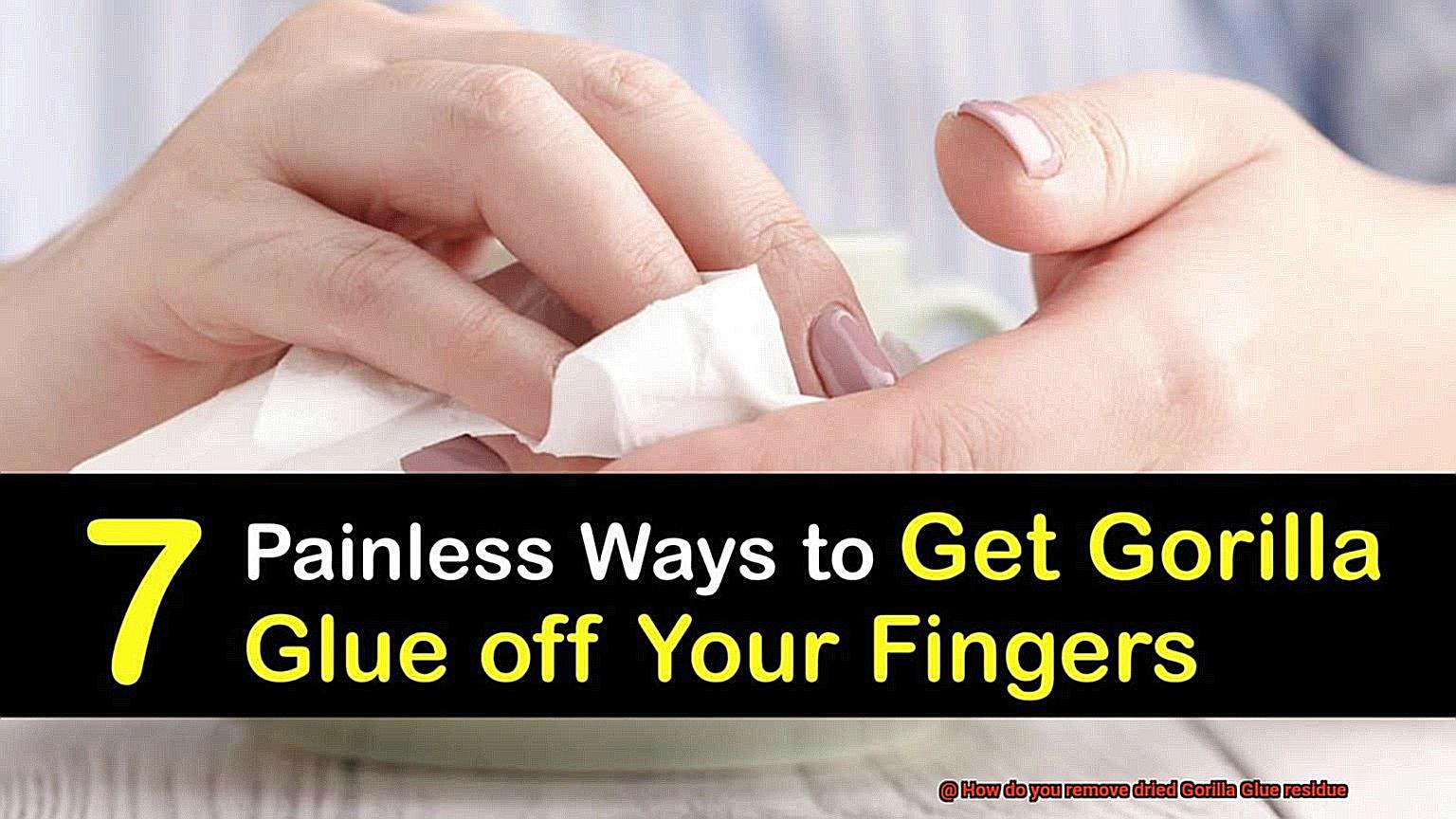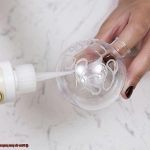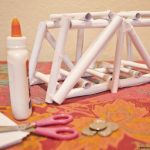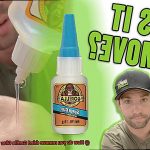Picture this: you’ve just finished a DIY project using Gorilla Glue, feeling like a champion of craftsmanship. But then reality hits hard when you notice that pesky residue left behind by the almighty adhesive. Cue frustration and despair. Fear not, my fellow glue warriors. We’re about to embark on an epic quest to rid ourselves of dried Gorilla Glue residue once and for all.
In this thrilling guide, we’ll dive deep into the art of conquering stubborn glue remnants, ensuring your projects are flawlessly finished and your surfaces return to their former glory. Whether it’s an annoying smear on your beloved countertop or a glob that’s sabotaged your woodworking masterpiece, we’ll arm you with expert techniques and insider secrets to vanquish even the most tenacious adhesive foes.
Get ready for a wild ride as we unravel the mysteries behind removing dried Gorilla Glue residue. From powerful solvents to ingenious homemade remedies, we’ll explore a treasure trove of methods guaranteed to restore the pristine condition you hold dear. So grab your gloves, summon your determination, and let’s embark on this gripping adventure together.
What is Gorilla Glue?
Contents
- 1 What is Gorilla Glue?
- 2 Mechanical Removal of Dried Gorilla Glue Residue
- 3 Soaking in Warm Water to Remove Dried Gorilla Glue Residue
- 4 Using Acetone to Remove Dried Gorilla Glue Residue
- 5 Isopropyl Alcohol for Removing Dried Gorilla Glue Residue
- 6 Vinegar for Removing Dried Gorilla Glue Residue
- 7 Commercial Adhesive Removers for Removing Dried Gorilla Glue Residue
- 8 Safety Precautions When Removing Dried Gorilla Glue Residues
- 9 Conclusion
Gorilla Glue is not your ordinary adhesive. It is a powerful force that bonds materials together with an unyielding grip. This adhesive is a go-to choice for many DIY enthusiasts and professionals because of its remarkable properties and versatility.
First and foremost, let’s talk about strength. Gorilla Glue is known for its ability to create a bond that is stronger than the materials being joined together. It can withstand heavy loads and harsh conditions, making it the perfect glue for those tough projects. Whether you are working on a woodworking masterpiece or repairing a broken item, Gorilla Glue will provide a reliable and long-lasting bond.
What sets Gorilla Glue apart from other adhesives on the market is its polyurethane formula. This formula allows the glue to expand while it cures, filling in any gaps or imperfections in the surface being bonded. It’s like a superhero swooping in to rescue your project from imperfection. The expansion ensures a tight and secure bond, even on rough or uneven surfaces.
Versatility is another remarkable feature of Gorilla Glue. It can bond almost any surface you throw at it. Wood, metal, stone, ceramic, foam, glass – you name it, Gorilla Glue can handle it. This makes it an excellent choice for various projects, whether you’re repairing furniture, creating art pieces, or constructing something from scratch.
Gorilla Glue doesn’t back down when faced with water or extreme temperatures. Once fully cured, this adhesive becomes waterproof and can endure both scorching heat and freezing cold without losing its grip. You can confidently use it indoors or outdoors, knowing that it will withstand different environmental conditions.
Of course, with great power comes great responsibility. When using Gorilla Glue, it’s important to follow the manufacturer’s instructions for proper handling and application. Use gloves and work in a well-ventilated area to ensure your safety. And remember, clean any excess glue immediately to avoid unwanted residue.
Mechanical Removal of Dried Gorilla Glue Residue
Mechanical removal is a powerful weapon in the battle against dried Gorilla Glue residue. This method involves getting hands-on and physically scraping or sanding away the stubborn glue from the surface it has clung to. While it may require a bit of elbow grease, mechanical removal can be a reliable and effective way to eliminate even the most tenacious glue remnants.
To embark on this mission, gather your arsenal of tools. You’ll need a sharp-edged scraper or putty knife, sandpaper or a sanding block, and for larger areas, a power sander. But don’t forget your armor – protective gloves and safety glasses are essential to ensure your safety during the process.
Before you dive headfirst into the battle, take a moment to assess the surface that needs rescuing. Different materials may require different approaches when it comes to mechanical removal. If you’re dealing with a hard surface like wood or metal, unleash your scraper or putty knife and gently scrape away the dried glue. Just tread lightly to avoid inflicting any collateral damage on the underlying surface.
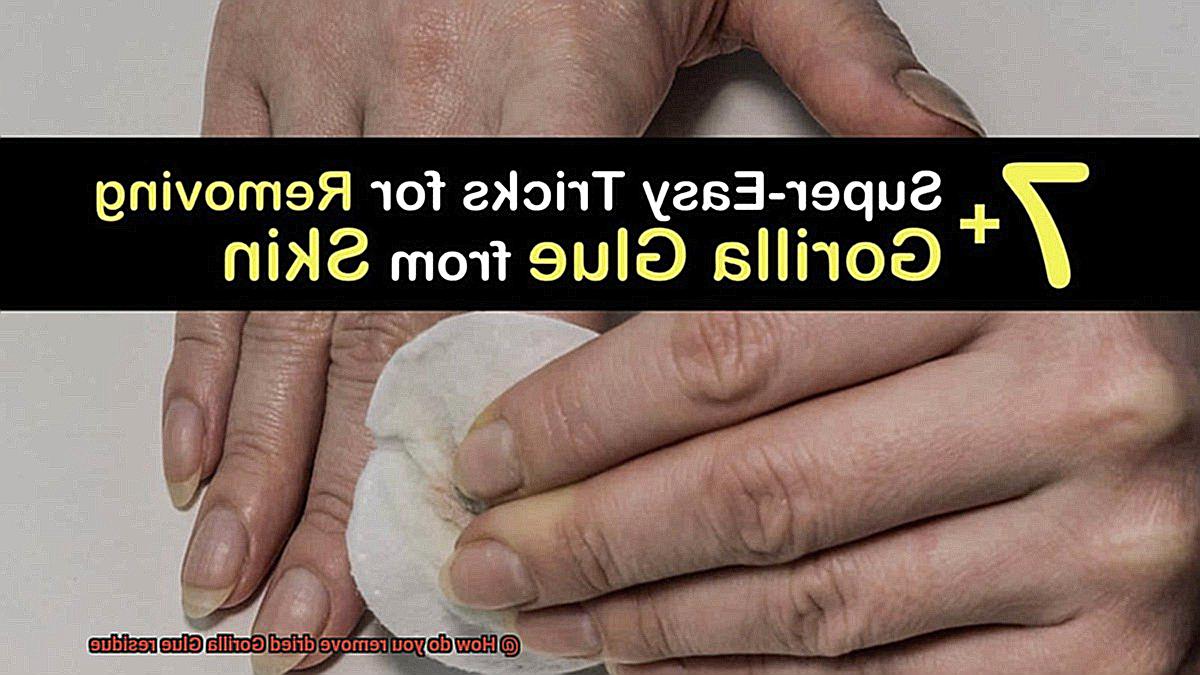
But what if you’re facing a more delicate foe, like fabric or carpet? In such cases, proceed with caution to avoid causing further harm. Instead of sandpaper or a sanding block, employ a soft brush or toothbrush to delicately scrub away the residue. If necessary, concoct a gentle soap solution by mixing a small amount of mild soap with warm water and apply it in conjunction with your brushing technique.
For those facing larger areas or surfaces made of sturdier stuff, unleash the power sander. With its might and efficiency, it can quickly liberate you from Gorilla Glue’s clutches. However, exercise caution and use low-grit sandpaper (around 80 grit) to prevent excessive abrasion or damage to your surface.
Don’t rush into battle blindly. Test your chosen method in a small, inconspicuous area to gauge its effectiveness and impact on the surface. This trial run will help ensure that your chosen approach doesn’t cause any unintended consequences before you unleash it on the entire affected area.
Once you’ve successfully completed the mechanical removal process, it’s time to clean up the battlefield. Grab a damp cloth or sponge and wipe away any remaining residue or dust. If those pesky remnants refuse to surrender, call in reinforcements – a mild detergent should do the trick. Just remember to allow the surface to dry completely before applying any further treatments or finishes.
Soaking in Warm Water to Remove Dried Gorilla Glue Residue
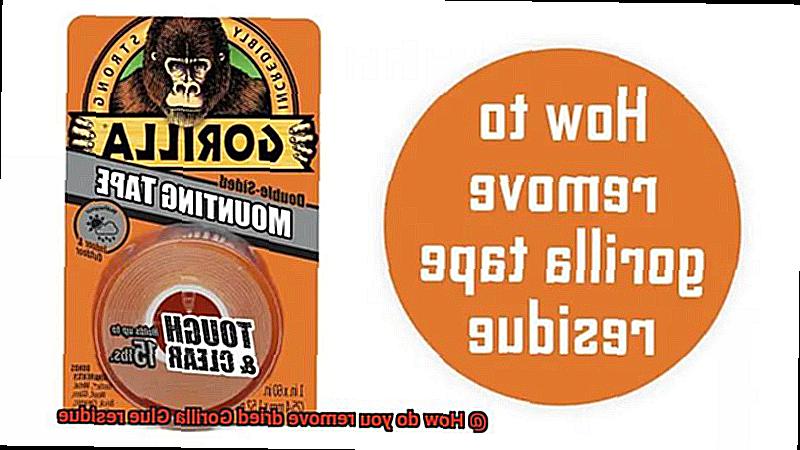
Soaking in warm water is not only a practical solution, but it’s also a gentle and non-toxic method for eliminating dried Gorilla Glue residue. This technique harnesses the power of warmth to soften the adhesive, facilitating its effortless removal. To embark on this glue-removing adventure, follow these steps:
Firstly, prepare a basin or sink filled with warm water. However, be mindful not to use scalding hot water as it may damage delicate surfaces or materials.
Next, immerse the item adorned with the stubborn glue residue into the warm water, allowing it to soak for a minimum of 30 minutes. If the object is too large to submerge entirely, don’t fret. Simply drench a cloth in warm water and gently lay it over the glued area.
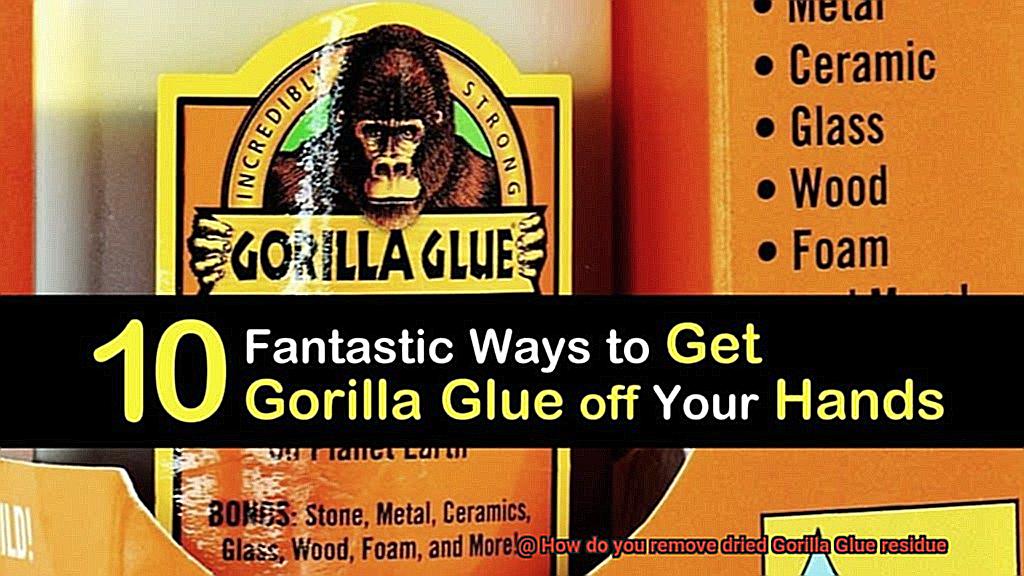
It’s important to note that while soaking in warm water won’t dissolve the glue completely, it will undoubtedly soften it, making scraping or peeling significantly easier.
After the allotted soaking time has passed, arm yourself with a soft brush or cloth. With a tender touch, commence the gentle scrubbing process to remove the softened glue residue. For more tenacious adhesive remnants, cautiously employ a plastic scraper or your own fingernail. However, exercise caution when utilizing sharp objects to avoid any unintended damage.
If any stubborn traces of glue remain, repeat the soaking procedure and continue scrubbing until all remnants are vanquished.
Once triumphant in your quest to obliterate all traces of Gorilla Glue residue, rinse the item thoroughly with clean water to ensure no lingering glue or soap remains.
Using Acetone to Remove Dried Gorilla Glue Residue
If you’ve found yourself in a sticky situation with dried Gorilla Glue residue clinging to your favorite item, fear not. Acetone is here to save the day. In this article, we will delve into the process of using acetone to effectively eliminate dried Gorilla Glue residue from various surfaces.
Acetone, a commonly used solvent renowned for its adhesive-dissolving properties, will be our trusty sidekick. However, before embarking on this glue-busting adventure, it is imperative to handle acetone with caution and work in a well-ventilated area. To ensure the surface’s integrity isn’t compromised, test the acetone on a small, inconspicuous area first.
Now that we have our safety precautions in place, let’s gather our supplies. Acquire acetone from your local hardware or home improvement store, along with cotton balls or swabs, a plastic scraper or an old credit card, and protective gloves.
Begin by soaking a cotton ball or swab in acetone and gently dabbing it onto the dried glue residue. Allow the acetone to penetrate the adhesive for a few minutes, softening it for easier removal.
Once the glue has softened, carefully scrape off the residue using a plastic scraper or an old credit card. Exercise caution to avoid damaging the underlying surface.
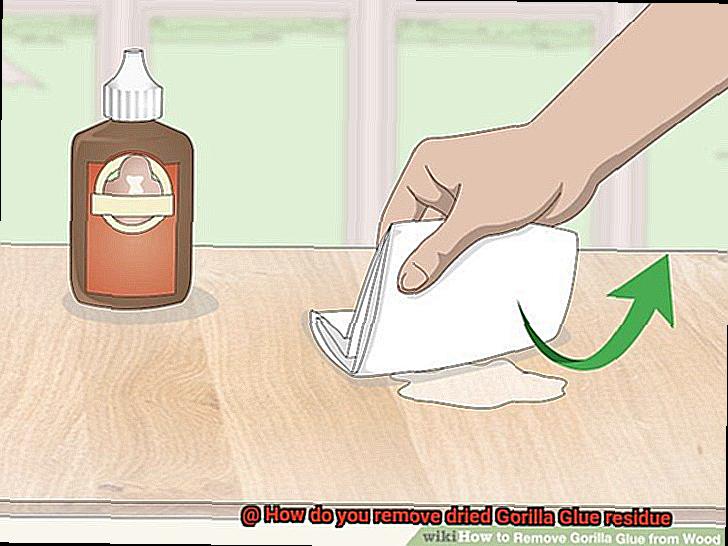
For particularly stubborn areas, repeat the process of applying acetone and scraping until all remnants have been successfully eradicated.
After removing all traces of glue residue, cleanse the surface with warm soapy water to eliminate any lingering traces of acetone.
It is important to note that acetone should not be used on certain surfaces, such as leather, vinyl, or painted surfaces. These materials may suffer damage or discoloration. In such cases, it is advisable to consult a professional or refer to the manufacturer’s instructions for specific cleaning methods.
Lastly, responsibly dispose of any leftover acetone, as well as used cotton balls or swabs, in accordance with local regulations. Safety always comes first.
Isopropyl Alcohol for Removing Dried Gorilla Glue Residue
Isopropyl alcohol is a versatile and effective solvent when it comes to removing dried Gorilla Glue residue. Its solvent properties make it an ideal choice for breaking down the chemical bonds in the adhesive, making it easier to remove. Unlike other harsh solvents, isopropyl alcohol is less likely to cause damage to surfaces, making it a safer option for various materials.
However, before diving into the process, it’s essential to prioritize safety. Isopropyl alcohol is highly flammable, so working in a well-ventilated area and keeping open flames or sparks away is crucial. Additionally, wearing gloves will protect your hands from the drying effects of the alcohol.
To effectively use isopropyl alcohol for removing dried Gorilla Glue residue, follow these simple steps. Start by pouring a small amount of isopropyl alcohol onto a clean cloth or cotton ball. Gently dab the affected area with the alcohol-soaked cloth, avoiding excessive rubbing that may damage the surface. Allow the alcohol to penetrate the dried glue for a few minutes to loosen its grip.
Next, use a plastic scraper or your fingernail to gently scrape off the softened glue. Be cautious not to scratch or damage the underlying surface. For stubborn residue, repeat the process multiple times until all traces of Gorilla Glue are removed.
After successfully scraping off the dried residue, wipe down the area with a clean cloth dampened with warm water. This will help eliminate any remaining adhesive and alcohol. Finally, ensure that you dry the surface thoroughly with another clean cloth.
It’s worth noting that while isopropyl alcohol is effective on many surfaces, it may not work as well on porous materials like fabric or wood. In those cases, consulting manufacturer instructions or seeking professional advice is recommended to avoid potential damage.
Vinegar for Removing Dried Gorilla Glue Residue
Vinegar, a versatile household ingredient, holds the key to effortlessly banishing dried Gorilla Glue residue. Its acidic properties effectively dismantle the adhesive grip of this stubborn glue, rendering it vulnerable. Here’s how you can wield vinegar as your secret weapon:
- Assemble your arsenal: Arm yourself with white vinegar, a cloth or sponge, a scraper (or your trusty fingers), and soap and water for the final clean-up.
- Immerse the cloth or sponge in white vinegar: Ensure it is saturated but not dripping excessively.
- Initiate the gentle rub: Employing the vinegar-soaked cloth or sponge, commence the delicate process of rubbing away the dried Gorilla Glue residue. With deft strokes and light pressure, coax the glue from its clutches.
- Allow vinegar to marinate: Grant the vinegar permission to sit on the residue for a few minutes. This crucial interlude further sabotages the adhesive’s integrity, intensifying its vulnerability.
- Eviscerate the softened foe: Unleash your scraper or nimble fingers to meticulously peel off the now softened Gorilla Glue residue. Exercise caution to avoid scratching or harming the underlying surface.
- Persistence pays off: Should remnants of the glue persist, repeat this dance of destruction until every trace of residue has been eradicated, leaving behind a pristine surface.
- Precautionary measures: Prior to embarking on this vinegar-fueled mission, exercise prudence by conducting a small-scale experiment on an inconspicuous area. Not all surfaces will succumb equally to vinegar’s charm, and prevention is always preferable to remediation.
- Unleash fresh air: Acknowledge vinegar’s potent aroma by ensuring ample ventilation while employing it for glue removal. Shield yourself from its pungent embrace and let fresh air dilute its intensity.
- Final cleansing act: Once triumphant in your quest to reclaim the surface, cleanse the area with soap and water. This purifying ritual vanquishes any lingering traces of vinegar’s presence, restoring equilibrium.
Commercial Adhesive Removers for Removing Dried Gorilla Glue Residue
Commercial adhesive removers offer a targeted and effective solution for removing dried Gorilla Glue residue. These specially formulated products are designed to break down tough adhesives and are available in various types and forms.
One popular type of commercial adhesive remover is the solvent-based remover. These removers contain powerful chemicals that dissolve and soften dried glue, making it easier to remove. They work on a wide range of adhesives, including Gorilla Glue. When using a solvent-based remover, it is important to follow the manufacturer’s instructions carefully. Apply the remover directly to the dried glue residue and allow it to sit for the recommended amount of time, allowing the solvent to work its magic.
After the recommended time has passed, gently scrape off the softened glue using a plastic scraper or soft cloth. Be sure to apply gentle pressure to avoid damaging the surface underneath. Some commercial adhesive removers also come in gel or paste form, which provide better control over application and are ideal for vertical surfaces.
Another option is citrus-based adhesive removers, which use natural citrus extracts as their active ingredients. These removers are less harsh on surfaces and have a pleasant citrus scent. They work by breaking down the adhesive bond while leaving behind an oily residue that helps lubricate the glue for easier removal. After applying the remover, let it sit for a few minutes before attempting to scrape off the softened glue.
It’s worth noting that commercial adhesive removers may not completely remove all traces of dried Gorilla Glue residue on the first attempt. Multiple applications and gentle scraping may be necessary for stubborn or thick glue residues.
Once the dried Gorilla Glue residue has been successfully removed using a commercial adhesive remover, it is important to clean the surface thoroughly with soap and water to remove any remaining residue from the remover itself.
Safety Precautions When Removing Dried Gorilla Glue Residues
When it comes to removing dried Gorilla Glue residues, safety should be your top priority. The strong adhesive properties of Gorilla Glue make it challenging to remove once it has dried. However, with the right precautions in place, you can safely tackle this task.
To begin, make sure to wear protective gear such as gloves and safety glasses. These will shield your skin and eyes from accidental contact with the glue, reducing the risk of irritation or injury.
Next, work in a well-ventilated area. The fumes and vapors that Gorilla Glue may release during the removal process can be harmful if inhaled. Open windows or use fans to improve air circulation and minimize inhalation.
Before you start, carefully read and follow the instructions provided by the manufacturer on the Gorilla Glue packaging. These guidelines will include specific safety recommendations for handling and removing the product.
It’s also important to test any adhesive remover or solvent on a small, inconspicuous area before applying it to the dried glue residue. This test will help you determine if the product is suitable for use and if it may cause any adverse reactions on the surface being treated.
When using adhesive removers or solvents, always follow the manufacturer’s instructions. Some products may require dilution or specific application methods, so be sure to read and understand these instructions before proceeding.
Avoid using excessive force or abrasive materials when removing dried Gorilla Glue residues. Scratching or scraping at the surface can cause damage, especially on delicate or sensitive materials. Instead, opt for gentle techniques such as soaking the area in warm soapy water or using a soft cloth soaked in adhesive remover to gradually loosen the glue.
If you’re working on a larger surface area or dealing with stubborn residues, consider using plastic or wooden tools for scraping. Metal tools should be avoided as they can easily scratch or damage the surface.
Proper disposal of removed Gorilla Glue residues is also important from a safety standpoint. Follow local regulations and guidelines for disposing of chemical waste or adhesive residues. Some municipalities may have specific requirements, so it’s important to research and adhere to these guidelines.
Lastly, always have a first aid kit on hand in case of accidents or injuries during the removal process. This kit should include items such as bandages, antiseptic solution, and sterile dressings to treat any minor cuts or burns that may occur.
D076rtJc8Iw” >
Also Read: How do you remove dried Gorilla Glue?
Conclusion
Removing dried Gorilla Glue residue can be a challenging task, but fear not. With the right techniques and a little bit of patience, you can restore your surfaces to their former glory. Here are some tried-and-true methods to tackle this stubborn adhesive:
- Heat it up: Apply heat to the dried glue using a hairdryer or heat gun on a low setting. The warmth will soften the glue, making it easier to scrape off with a plastic scraper or your fingernail.
- Soak it in acetone: Acetone is a powerful solvent that can break down Gorilla Glue. Soak a cloth or cotton ball in acetone and place it over the affected area for several minutes. Then, gently rub the residue away using circular motions.
- Use rubbing alcohol: If you don’t have acetone on hand, rubbing alcohol can also do the trick. Moisten a cloth with rubbing alcohol and dab it onto the dried glue. Let it sit for a few minutes before wiping away the residue.
- Try vinegar: Vinegar is another household item that can help dissolve Gorilla Glue residue. Soak a cloth in vinegar and apply it to the affected area for about 15 minutes. Afterward, use a plastic scraper or your fingers to peel off the softened glue.
- Sand it down: For more stubborn residues, sanding might be necessary. Use fine-grit sandpaper or an electric sander to gently remove the dried glue without damaging the surface underneath.
Remember to always test these methods on a small, inconspicuous area first to ensure they won’t cause any damage or discoloration. Additionally, wear protective gloves and work in a well-ventilated area when using solvents like acetone.
By following these steps and arming yourself with patience and perseverance, you’ll be able to bid farewell to that pesky Gorilla Glue residue and restore your surfaces to their original state.

